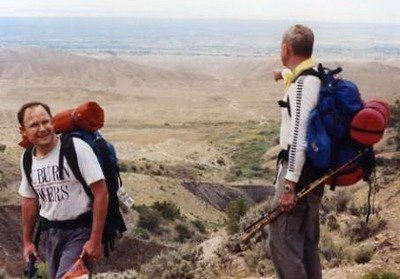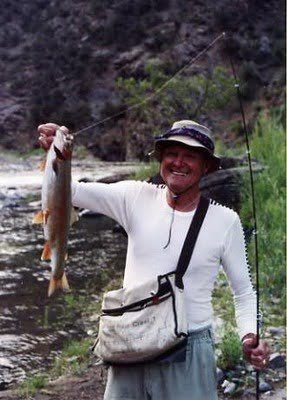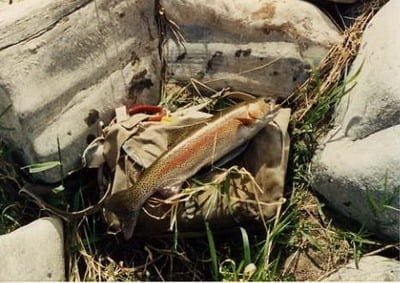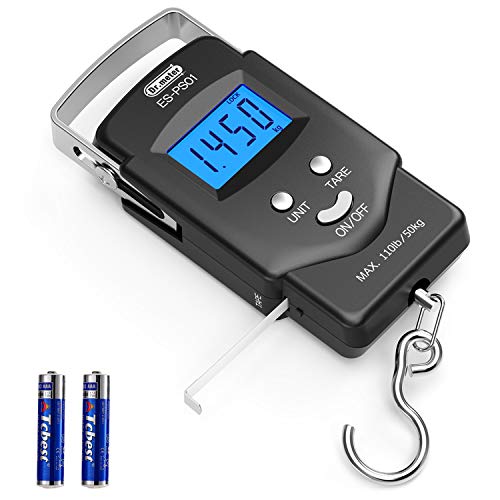It may be heaven on earth, but it is hell to get there.
The winter 2007 issue of TROUT discussed the success of a conservation initiative to ensure the continued supply of water to the Gunnison River through the Black Canyon. This protects one of the most spectacular fishing spots I’ve ever been to.
I’ve been into the Black Canyon three times – two by hiking in through the Red Rocks Canyon trail and once on a float trip. The simple conclusion is that words will fail to describe the experience. The photos below were taken on my last trip – which was prior to the devastating plague of whirling disease that just about ruined Colorado as a trout destination.
In the past, access to the Red Rocks trail required obtaining permission from the landowner. Thanks to the kindness of Mrs. Williams, we were allowed to access it via her property. Now, there is a program that regulates public access via a permit system that controls pressure using a maximum footprint and lottery. With a little planning and a little luck, you can grab a slot and be on your way to the fishing experience of a lifetime.
As background, the Red Rocks trail runs 3.4 miles from the current parking lot with a vertical drop of 1,330 feet – all of it in the last 2 miles of the trail. You should plan on at least a 2 hour walk to get in. Once in, figure out how long it took you to get to the river and then multiply that by 3 to determine how much time it will take you to climb back out.
The trail is very narrow – typically a foot wide. At the top, it is easy to veer off to the right – so be sure you keep the creek close to you. This section of Colorado is full of poison ivy. If you are sensitive to it, be sure and use Ivy Block and the other products that mitigate the risk of irritation.
Once you identify the trail, it’s pretty easy to stay on it – as long as you are going down, you’re heading in the right direction. Initially, the creek will be on your left. Where the trail crosses the creek for the second half of the descent, it used to be very sporty. You will need to throw your pack across the creek and then make about a three foot jump. It’s not possible to wade as the creek goes over a small waterfall at that point. Now that there is general access, hopefully the Park Service installed a footbridge here – but plan on the worst case. Do not go if you can’t jump.
Right before the crossing, there is a small cave. I recommend you use this as a landmark and leave and cover up a six pack of coke in the cool water of the creek in that area. You will be grateful for the sugar shock when you finally climb back to this point and the cave makes a good, cool place to get out of the blazing canyon sun while you enjoy it.
A couple hundred yards from the river, the trail will cross a damp area with a pool or two. It will be obvious to you that this is not part of the creek. It is a nice, fresh spring and is a good place to refill all your water bottles. Since Giardia is everywhere, you should still run this water through a purification system or just use the tablets. The water is so clear and cold, you may be tempted to skip that step – don’t.
When you hit the river, turn upstream. You will have to negotiate a small climb of about 15 feet up a very steep hill (picture below). Once you are over it, you have the run of the river. The best camping spot is at the far upstream end. Walk in about a mile until you hit a sheer cliff face. Although I watched a couple of guys climb over this thing to get to the upper section of the river, it really looked dangerous to me. Anyway, right there is the best spot to camp. It’s flat and there are a few scrub trees to give you some shade when you take a break in the heat of the day. Drop your pack and take a break. Nothing really moves during the middle of the day – the heat boils down off the steep canyon walls and slows everything down.
Don’t forget to fish where the Red Rock creek hits the river. Although the water is milky there from the creek runoff, it pays off to work your way downstream a bit and fish the confluence. Go deep here – this is big water.

Gear: You really should take both a fly and a spin outfit. This is probably a great place to use the Hybrid – Fly/Spin Rod type rods that have a switchable handle at the bottom. You will need the spin gear to go long and deep. The river is fairly wide and there are deep spots that prevent you from wading across. You really need to be careful down here – folks have been swept away by the current. The fly rig would be perfect for the pocket type water in the boulder strewn sections. But, you need to use big sizes. “There be monsters” in the depths which relished our large size Panther Martins and Vibraxes. Since I did not fly fish at the time, I don’t have advice other than go deep with big streamers and nymphs. Be sure you take an extra rod and reel as any equipment malfunction would ruin your trip.
Wear hiking boots to get in, pack your sneakers or other shoes to use as you wet wade. Be sure and have a nice, dry pair of socks for the hike out.
Preparation: Do NOT carry anything you do not need! Make a list, check it three times. This is not a hike where anything that is a luxury should be taken. According to the Park Service, you should plan on 4 quarts of water per day per person.
Regulations:
- Artificial lures only; no bait
- Rainbow trout (regardless of size) are catch and release
- Browns between 12 – 16 must be returned to the water
- You can keep 4 fish, but only one can be greater than 16 inches
- No campfires – take a gas stove
- Free backcountry permit is required
Risk: This is a risky place to go. You are on your own and had better be in shape. There is no nearby rescue. You need to be prepared to survive while your buddy takes up to 10 hours to get out and get to civilization to organize a rescue. For sure, use a GPS so you can find your way back.
Important links:
Want some good news after all that? There are no poisonous snakes in the Canyon because it gets too cold for them. Something to think about and be grateful for as you scratch your poison ivy… Use that Ivy Block stuff!

In the “old days”, we would climb up from Mrs. Williams property and work around to the public land to get to the start of the Red Rocks trail. That’s Montrose way out in the distance. It was about 1/2 mile from where we had to park to get to the top of the first hump – a hard walk by itself. On this particular trip, I went with my brother and father. If anyone watched the Mel Gibson movie, “We Were Soldiers” in 2002 – Mel portrayed my father (Hal Moore) in that film. He was still a rock at age 69 when this picture was taken.

Top of the Red Rocks trail at the head of the canyon. The agony of the descent is about to begin. You can see that the trail is very narrow and not well marked. Something that looks like a trail will veer up and to the right – do not take it. If you find yourself leaving the creek by much, double check where you are.

Representative shot of the climb. This is looking straight down on a pitch at the river – but many of these types of tough stretches exist on the 3 mile descent.

But, once you get to the bottom, this is the very private view that waits. The river runs crystal clear, wide, and cold. In my two trips down there, we only saw one other group and they quickly disappeared upstream. It may be different now with the lottery. The need to get landowner permission in the past probably kept the pressure low. Given the current rules on access, you should probably count on sharing the river with another party or two.

My Dad with a typical Black Canyon trout. The “gold medal” status protects the Black Canyon as it requires catch and release with some minor exceptions. The other key thing that protects the parts of the river you have to hike into is that the meat fishermen do not go there as the brutal climb out would be made even more difficult trying to carry a substantial number of fish – the weight is just not worth it. These days, all rainbows must be released immediately

Greg working a section of the river. Note that the water has many calm areas. These were typically also very deep. You have to be patient and let your lure sink, sink and sink. We also found the technique of throwing the lure into fast water where it pounds against a cliff face productive. Throw it, wait and let it sweep downstream and then twitch. Bang! That’s when the monsters attack it.

This is in the section beyond where we camped. We used an inflatable raft to work around a sheer cliff that cut off access to this section. It is full of tight runs, boulders and other terrain that trout love.

Wide spot up near the closed out section where we camped. You can see that the banks are wide in this portion of the river. The initial 1/2 mile upstream from where the trail hits the river is tough rock scrambling, but then it switches to this type of terrain.

Amazing fish. These bad boys get huge. The regulations stipulate that you can keep one fish over 16 inches. I remember that we hauled one of these guys out to give to Mrs. Williams as a thank you – the rest were released. This was years before Whirling Disease wiped out the rainbows. It probably takes 10 years for a fish to grow this large.
He was returned to the river.

Another shot of the river. As you can see, it was pretty wide and reasonably shallow near the banks. The deep cuts are in the center or the eroded bank. We would wet wade to avoid having to deal with the weight of waders. Every ounce matters on a the brutal hike in and out.

To save weight, all we brought was a small tarp to sleep under – basically, just to keep the dew off. No need to haul in a heavy tent. In the summer, the canyon is blazingly hot as the heat ricochets off the canyon walls. If you do this, check the forecast – it would suck if it rained and you took this shortcut. You should bring a decent summer bag as it does get cold at night.

One of the prettiest fish around. Look at that color.

This section of the river has plenty of turns where the water is stirred up and heavily oxygenated. We found the most productive fishing in those spots.

Another shot of the wide and easy access the upstream section where you should camp. One of the attractions of the Red Rocks section is that there is at least a mile of river you can fish. This makes it very different from other parts of the river where you hump in for hours on a brutal hike only to have access to a small portion of the river based on the terrain.
Unless stated otherwise, this article was authored by Steve Moore


